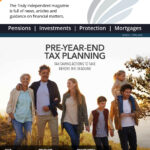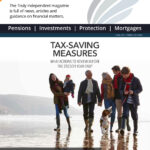When it comes to managing risk pensioners are ‘in the dark’ over how to protect their pots if markets tumble. Many retirees are at risk of overlooking their pension finances by falling into an avoidable trap, according to new research.
A third (36%) of people keeping their pension invested through retirement could be hit harder by falling markets as they do not have a cash safety-net to fall back on, research has found [1]. And even though two thirds (64%) of retirees are holding cash in reserve, fewer than one in ten (8%) would think to use it if there was a significant drop in the stock market.
Diversification across asset classes and regions is important for pensions, not just for good returns but also to manage the risks inherent in different asset classes and geographies.
Buffer of cash
Some retirees in drawdown will hold a buffer of cash which they can call on in volatile markets. By taking income from cash held inside their pension instead of their invested assets, they are not forced to sell investments at lower prices.
This can help to protect them from ‘pound-cost-ravaging’ where, as stock prices drop, retirees are forced to sell more investments to achieve the same level of income, depleting the capital of their pot more quickly and reducing its future growth.
Safeguard pots
Recent volatility in the market could have left some retirees feeling unnerved, but there are steps that can be taken to safeguard their pots. It’s good to check regularly that you’re not taking more income than you need and that your pension is well diversified.
If markets tumble, it pays to be more cautious by scaling back your income or turning off the taps altogether. Alternatively, limiting the level of withdrawal to the ‘natural’ income from share dividends or bonds leaves the underlying investment in tact, giving it a better chance to regain lost ground when markets recover.
Shielding drawdown savings
- Diversify to avoid stretching income – diversification is essential to protecting your assets in a market crash. As ever, picking a portfolio of non-correlated investments, diversified by geographical region, asset class and sector, can help to reduce a portfolio’s overall volatility and create greater stability of returns.
- Have a safety net – Building up a cash buffer can protect against falling stock markets and means you might not have to reduce your standard of living while the market corrects. Holding two year’s cash means you won’t be forced to sell when prices are falling, thereby locking in losses. Instead of cashing in funds, you can dip into cash reserves, giving your pot a chance to regain lost ground.
- Turn off the taps – if you can afford to, scale back your withdrawals or place them on hold until markets have recovered. Alternatively, limit the level of withdrawal to the natural income from share dividends or bonds. This leaves the underlying investments intact, giving them a better chance to recover when markets rise.
- Invest in multi-assets – multi-assets, as the name suggests, invest in different types of assets, from equities to property. In a downturn, some asset classes may not fall by as much as others, meaning multi-asset funds can help to smooth out the effects of a market crash while offering investors a greater level of protection.
- Have a number of buckets – having a medium-term investment bucket and a longer-term investment bucket can help to manage the mood swings of the stock market. The cash bucket is fed by the medium bucket, which is in turn fed from the long-term bucket.
- Rebalance – rebalancing can help to maintain the overall risk of a portfolio in line with your needs. Rebalancing won’t necessarily provide a greater investment return, but it is a protection mechanism against creating undue or unanticipated risk.
Save today to enjoy tomorrow
Whatever you want from retirement, one thing is certain – to give you the retirement you want and deserve, you need to plan ahead. To find out how we can help contact one of our independent financial advisers here.










Follow us